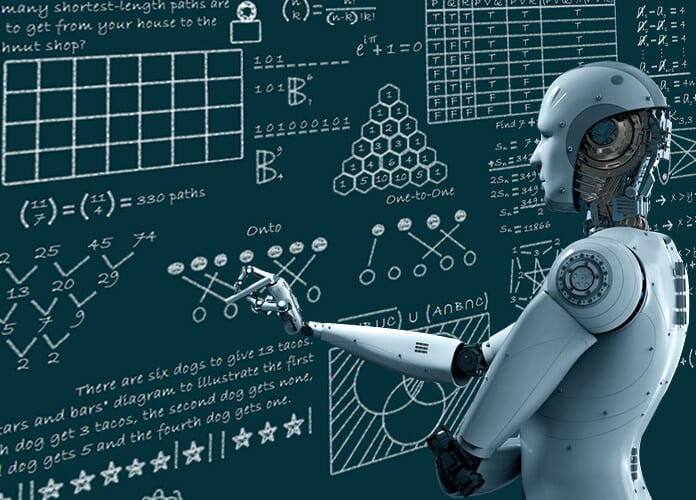Unveiling the Magic: Understanding and Applying Algorithms
INTRODUCTION
An Algorithms is a step by step set of instruction or rules designed to perform a specific tasks or solve a particular problem. In the realm of computer science and mathematics, algorithms serves as the fundamental building blocks for solving complex problems efficiently. These sequences of well defined steps guide the execution of a process, enabling the achievements of a desire outcome. Algorithms are not limited to the digital realm, they find applications in various fields, such as optimization, data analysis, and problem solving across diverse industries. Whether its sorting data, searching for information, or executing complex computations, algorithms provide a systematic and logical approach, offering a universal language for problem solving that extends beyond the confines of computing into the broader landscapes of problem solving methodologies. Understanding algorithms is crucial in unleashing the power of computational thinking and fostering innovation across a spectrum of disciplines.

Defining Algorithm
At its core, algorithm is a step by step set of instruction designed to perform a specific tasks or solve a particular problem. Much likes a recipe guides a chef through the process of creating a delicious dish, an algorithm guides a computer through a series a operation to achieve a desired outcome. These instructions must be precise unambiguous and executable, allowing for a predictable and repeatable process. Think of algorithms as architects of efficiency in the digital realm providing structured paths or computer to follow in order to accomplish tasks ranging from simple calculations to complex data analysis. These sequences are crafted with the intentions of achieving a desired outcome by efficiently and effectively. Algorithms can be likened to recipes where each step is carefully articulated to ensure a successful result. They form the backbone of computational thinking, serves as the bedrock of various application in software development, data analysis, artificial intelligence, and beyond.
The essence of an algorithms lies in it ability to provide a clear and unambiguous solution strategy, making it a fundamental concept in problem solving across diverse domains. Whether sorting a list of numbers, searching a information, or optimizing complex operations, algorithms are the silent, architects that empower the digital world and shape the landscape of modern technology.

Key Components of Algorithms
The Components of a Algorithms include:
Input: Algorithms take input data, which are the raw materials on which the algorithms operates. This ca be any information or variables needed for the Algorithms to produce a meaningful result.
Output: The output represent a desired result or information generated by the algorithm after processing the input data. The effectiveness of an algorithm is often measured by the accuracy and relevance of its output.
Step or Instructions: Algorithms consist of a series of well-defined and unambiguous steps or instructions. These step details the specific operations the algorithms must perform on the input to produce the desired output. Eachstep must be clearly articulated and executable.
Termination Condition: Algorithms have a termination condition that specifies when the process should end. This condition is essential to prevent infinite loops and ensure that the algorithms completes its tasks within a reasonable amount of time.
Control Structures: Algorithms often include control structures, such as loops and conditional statements to manage the flow of execution. These structured determine how many times certain steps are repeated or whether specific tasks are executed based on certain conditions.
Clarity and Unambiguity: It is essential charactistics of a good algorithms. Each step must be clearly defined, leaving no room for interpretation or ambiguity. This ensures that the algorithms can be accurately implemented and understood by others.
Optimality and Efficiency: Depending on the problem, Algorithms strive on optimality and efficiency in the terms of time and space complexity. An optimal algorithms produce the best possible result, and efficiency concerns the algorithms ability to achieve this result with minimal resource usage.
Reusability: Well-designed algorithms are often modular and reusable, meaning they can be adapted for use in different contexts or combine with other algorithms to solve more complex problems.

Real-World Applications
Algorithms play a pivotal role in a myriad of real world applications, contributing to efficiency, problem solving, and automation across various domains. SOme notable examples include:
Search Algorithms: Ever wonders how search engines quickly sift through vast amount of data to provide relevant results? Algorithms such as PageRank algorithms (used by Google) are the heart of this process, determining the most valuable and pertinent information.
Sorting Algorithms: When you organize your music library alphabetically or by release date, you are essentially employing sorting algorithms. These algorithms arrange data in a specific order, making it easier to access or analyze.
Machine Learning Algorithms: In the realm of Artificial Intelligence, algorithms power machine learning models, enabling systems to learn from data and make predictions. From recommendation engines to image recognition, algorithms are driving advancements in AI.
Pathfinding Algorithms: Navigation apps rely on algorithms to find the shortest and fastest routes between locations. Dijikstra’s algorithms for instance, is widely used in mapping and logistics.
Social media Algorithms: Platforms like Facebook, Instagram, Twitter, use algorithms to curate and personalized content in users, feed, showing posts, advertisements, recommendation tailored in individual preferences and behaviours.
Financial Trading: Algorithmic trading relies on complex algorithms to analyze market data, execute trades, and manage portfolios at high speeds, enabling automated decision-making in financial market.
Whether Prediction: Metereological algorithms process vast amount of data from whether stations, satellites, and other sources to model and predict weather patterns, helping in forecasting and disaster preparedness.
Fraud Detection: Financial Institution use algorithms to detect unusual patterns and anomalies in transactions, helping to identify potential fraudulent activities and enhance security measures.



